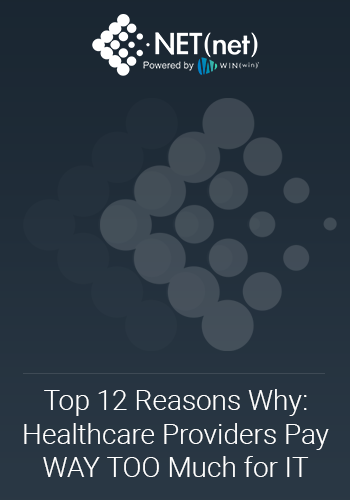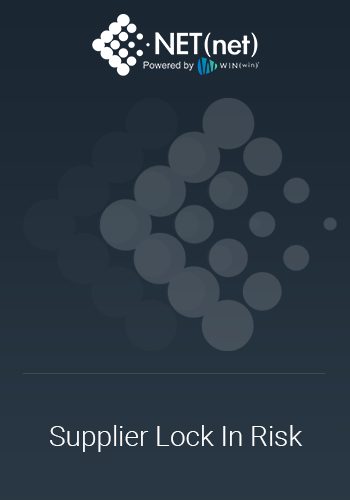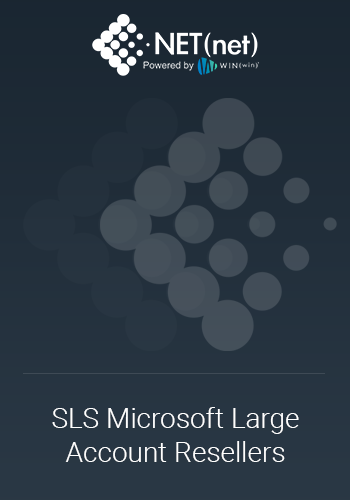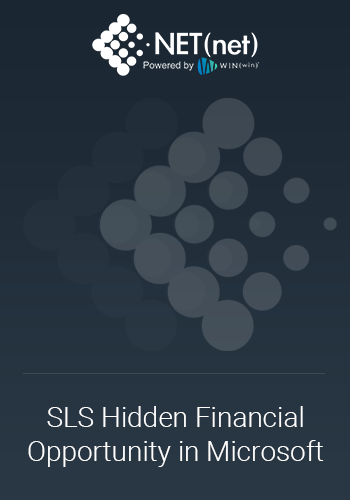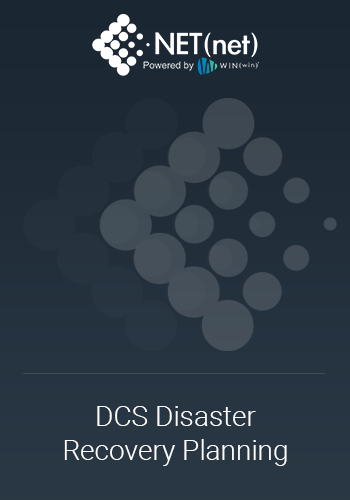The Top 28 Worst Offending Technology Suppliers of 2024
Preface
Nearly all clients are seeking greater prosperity in 2024.
While client organizations are still focused on cost reductions to meet the challenges of their new economic and market realities, the pent-up demands of the business are increasingly calling for innovation, automation, and organizational performance improvement.
Digital Transformation has emerged as the #1 Way to Boost Performance and Savings concurrently. Client organizations that are digitally transforming are harvesting greater value by:
- Automating tasks (RPA) to streamline efficiencies
- Unlocking data insights (ML) for better organizational (AI) decision-making
- Empowering flexible (Cloud) solutions for more cost-effective scaling
This drives greater innovation, improved organizational performance, and significant cost savings ranging from 25-30% (depending on industry, scope of transformation, maturity of transformation, and the methodology and execution) while at the same time, lowering risk by diversifying and improving the technology supply chain.
NET(net) is the #1 IT Cost and Value Optimization Provider. In the last 20+ years, NET(net) has shaped over $2 Trillion of investment, captured well over $400 Billion of incremental value for our clients and partners, and has an 85% probability of helping you save between 13-53% on your existing and planned IT costs. Our performance numbers are simply unmatched.
Series Description
The ever-evolving landscape of technology is a double-edged sword for businesses. While it unlocks incredible opportunities for innovation, enhanced operational efficiencies, and improved organizational performance, it also presents challenges when it comes to understanding the over-hyped mysticism of these supposed magical solutions that can solve all your problems, and managing the ever-increasing realm of constantly growing IT costs.
Look back on this 4-part blog series, to Parts 1 and 2:
- Part 1: We exposed the top 10 sneaky tactics commonly used by technology suppliers to jack up your costs.
- Part 2: We delved into some of the most outrageous, newly invented fees being slapped on you by technology suppliers in 2024.
We've equipped you with actionable strategies to fight back and ensure you're getting the most value from your technology investments.
In Part 3, we detail the behaviors of 28 major technology suppliers who are engaging in an unprecedented value-grab, riding the wave of cloud migrations, the SaaSification of all software, inflationary tactics and a host of other issues in an attempt to reset your economic reality. If you thought the price of gas or food or utilities was up – just look at software!
- Part 3: Feeling like your technology supplier might be overcharging? We'll unveil a Supplier Value Grab Report on 28 of the worst offending providers to help you compare your experience and discover negotiation strategies.
Finally, stay tuned to find out who the worst-of-the-worst is in Part 4
Introduction
The year 2024 has seen a disturbing trend in technology: a growing number of established suppliers have been making unilateral changes to the way they sell and license and have been implementing new, more restrictive policies about how they manage, contract, and support their customers – that seems to prioritize short-term profits over long-term customer satisfaction.
See our recent blog on this topic: Top 10 Tactics Technology Suppliers Use to Jack Up Your Costs
These changes are leading to significant price hikes, disruptions to core functionalities, and a growing sense of betrayal among businesses that rely on these tools for their daily operations. This blog post shines a light on 28 of the worst offending major technology suppliers who are engaging in this behavior in 2024. By exposing these tactics, we hope to empower client organizations to take proactive countermeasures, make informed decisions, and push back against this abuse.
Why This Matters: Rising IT costs are a major concern for enterprises worldwide. A 2024 Gartner report indicates that 67% of CIOs are experiencing budget constraints, despite the increasing need for digital transformation. Unfortunately, many trusted technology suppliers are contributing to this cost pressure by implementing practices that seemingly prioritize profit over customer satisfaction. Understanding these trends empowers client organizations to make informed decisions when selecting and negotiating with the suppliers that comprise their technology supply chains.
Subscription Shock and Other Cost Concerns in the Technology Landscape (2024)
This table provides a quick overview of potential cost concerns faced by businesses when using various supplier software models. A legend is provided below the table to define each issue in detail.
Definitions:
- Subscription Shock: Unexpectedly high costs due to exceeding usage limits within a subscription model, even with a fixed upfront subscription fee.
- Feature Bloat: Suppliers introducing unnecessary or unwanted features that inflate solution complexity and potentially increase costs.
- Price Hikes with Static Discounts: Suppliers raising overall costs while offering the same level of discount, essentially reducing the effective value of the discount.
- Discount Erosion: Suppliers gradually reducing the availability or value of previously negotiated discounts at periodic times like at renewals or at migrations to subscriptions.
- Shrinkflation of Features: Suppliers removing or limiting previously included features from their offerings while maintaining the same price.
- Renewal Price Gouging: Suppliers significantly increasing renewal costs for existing customers once they have developed a dependency on the technology and their switching costs are high.
- Suppliers generally delay even providing renewal quotes for as long as possible to minimize your time to react to this, thereby increasing the likelihood you will just renew.
- Quote from CVC Customer? “We made repeated attempts to get a renewal quote from Citrix and our requests went unanswered. When we finally got our quote AFTER our renewal date, it of course contained a huge cost increase, and there was no opportunity for us to react. It seems they intentionally didn’t provide a renewal quote because they knew the cost increase would shock us so much that we would want to look elsewhere, so they ran out the clock on us, which leaves us feeling misled and betrayed”.
- Support Creep: Suppliers gradually increasing the cost of support services or making basic support features only available through paid subscriptions.
- Auditing Ambiguity: Unclear or complex auditing practices by suppliers (including data, security, and contract-related audits) that can lead to unexpected charges or disputes over additional requirements.
- Artificial Obsolescence: Suppliers intentionally making older software versions less functional or secure to pressure customers to upgrade to newer, more expensive versions.
- Limited Customization Options: Suppliers restricting the ability of customers to customize software to fit their specific needs, potentially leading to inefficiencies or a need for additional services.
- Suppliers generally delay even providing renewal quotes for as long as possible to minimize your time to react to this, thereby increasing the likelihood you will just renew.
The following tables provide a quick overview of potential cost concerns faced by businesses when using various suppliers.
Legend:
- ✔ = Yes
- S = Sometimes
Cloud Infrastructure as a Service (IaaS) Providers:
|
Issue |
AWS |
Azure |
GCP |
|
Subscription Shock |
✔ |
✔ |
✔ |
|
Feature Bloat |
✔ |
✔ |
✔ |
|
Price Hikes with Static Discounts |
S |
S |
S |
|
Discount Erosion |
S |
S |
S |
|
Shrinkflation of Features |
S |
S |
S |
|
Renewal Price Gouging |
S |
S |
S |
|
Support Creep |
S |
S |
S |
|
Auditing Ambiguity |
✔ |
✔ |
✔ |
|
Artificial Obsolescence |
S |
S |
S |
|
Limited Customization Options |
✔ |
✔ |
✔ |
Additional Considerations:
- Lock-In: Switching between IaaS providers can be complex due to potential compatibility issues and the need to re-architect applications or migrate data. Carefully consider future needs and potential exit strategies when choosing an IaaS provider.
- Data Residency: Data privacy regulations might dictate where your data is stored. Ensure the IaaS provider offers data residency options that comply with your location-specific requirements.
- Egress Fees: Charges for data transfer out of the IaaS provider's network can be significant. Carefully evaluate your data transfer needs and factor in egress fees when comparing pricing structures.
- Security Considerations: While IaaS providers offer baseline security features, the responsibility for securing your data and workloads within the IaaS environment ultimately rests with you. Implement robust security practices to mitigate security risks.
Software as a Service (SaaS) Providers:
|
Issue |
Salesforce |
Workday |
ServiceNow |
NetSuite |
Zoom |
|
Subscription Shock (including runaway consumption charges) |
✔ |
✔ |
✔ |
✔ |
✔ |
|
Feature Bloat |
✔ |
✔ |
✔ |
✔ |
✔ |
|
Price Hikes with Static Discounts |
S |
S |
S |
S |
S |
|
Discount Erosion |
S |
S |
S |
S |
S |
|
Shrinkflation of Features |
S |
S |
S |
S |
S |
|
Renewal Price Gouging |
S |
S |
S |
S |
S |
|
Support Creep |
✔ |
✔ |
✔ |
✔ |
✔ |
|
Auditing |
S |
S |
S |
S |
S |
|
Artificial Obsolescence |
S |
S |
S |
S |
S |
|
Limited Customization Options |
✔ |
✔ |
✔ |
✔ |
✔ |
Additional Considerations:
- Data Integration and Migration: Moving data to and from a SaaS application can be challenging, especially for large datasets. Consider data integration capabilities and potential migration costs when evaluating SaaS solutions.
- Discontinuation: There's always a risk that a SaaS provider might discontinue the service or change pricing structures significantly. Evaluate the provider's track record and consider alternative solutions in case of discontinuation.
- Limited Control and Customization: SaaS solutions offer a pre-configured set of features. While some customization options might be available, they are typically limited compared to on-premise software. Assess your customization needs to ensure a SaaS solution can meet your requirements.
- API Availability and Integration: For businesses that rely on integrations with other applications, evaluate the availability and functionality of the SaaS provider's APIs to ensure seamless integration is possible.
Data Warehousing as a Service (DaaS) Providers:
|
Issue |
Databricks |
Snowflake |
Teradata |
|
Subscription Shock |
✔ |
✔ |
✔ |
|
Feature Bloat |
✔ |
✔ |
✔ |
|
Price Hikes with Static Discounts |
S |
S |
S |
|
Discount Erosion |
S |
S |
S |
|
Shrinkflation of Features |
S |
S |
S |
|
Renewal Price Gouging |
S |
S |
S |
|
Support Creep |
S |
S |
S |
|
Auditing |
S |
S |
S |
|
Artificial Obsolescence |
S |
S |
S |
|
Limited Customization Options |
✔ |
✔ |
✔ |
This list is limited to those who specialize in DaaS as their primary service but could easily include other providers such as AWS (Redshift), Azure (Synapse Analytics), Google (BigQuery), Oracle (Autonomous Data Warehouse), SAP (Data Warehouse Cloud), and IBM (Db2 on Cloud).
Additional Considerations:
- Network Bandwidth Requirements: DaaS relies on a stable and high-bandwidth internet connection to deliver a seamless desktop experience. Evaluate your network infrastructure and ensure it can support the bandwidth demands of DaaS.
- Data Security and Privacy: Since user data and applications reside on the DaaS provider's servers, data security and privacy are crucial concerns. Evaluate the provider's security practices and compliance certifications.
- Offline Access: DaaS solutions typically require an internet connection. Evaluate your need for offline access to applications or data and choose a DaaS provider that offers such functionality if needed.
- Client Device Compatibility: Not all client devices might be compatible with DaaS solutions. Ensure your existing devices are compatible or factor in the cost of replacing them when considering DaaS.
- Egress Fees: Charges for data transfer out of the DaaS provider's network can be significant, especially if you need to download large files or transfer data regularly. Carefully evaluate your data transfer needs and factor in egress fees when comparing pricing structures of different DaaS providers.
Security-as-a-Service (SecaaS) Providers:
|
Issue |
Crowdstrike |
Okta |
Palo Alto Networks |
Zscaler |
|
Subscription Shock |
✔ |
✔ |
✔ |
✔ |
|
Feature Bloat |
✔ |
✔ |
✔ |
✔ |
|
Price Hikes with Static Discounts |
S |
S |
S |
S |
|
Discount Erosion |
S |
S |
S |
S |
|
Shrinkflation of Features |
S |
S |
S |
S |
|
Renewal Price Gouging |
S |
S |
S |
S |
|
Support Creep |
✔ |
✔ |
✔ |
✔ |
|
Auditing |
S |
S |
S |
S |
|
Artificial Obsolescence |
S |
S |
S |
S |
|
Limited Customization Options |
✔ |
✔ |
✔ |
✔ |
Additional Considerations
- Hidden Fees: Security providers might have complex pricing structures with hidden fees for features or support that aren't clearly included in the base subscription. Carefully review agreements and ask clarifying questions to avoid surprises.
- Support Costs: Basic support might be included, but advanced features or dedicated support personnel often require additional subscriptions. Evaluate your support needs to determine the most cost-effective support tier.
- Data Security Risks: Since security providers store sensitive security data, they themselves become targets for attackers. Evaluate their data security practices, including encryption, access controls, and incident response protocols to mitigate potential risks.
- Lock-In: While less common, some security solutions can create vendor lock-in, making it difficult or expensive to switch providers in the future. Consider the ease of integration with existing security solutions and potential future migration costs when making your choice.
Software Publishers:
|
Issue |
Adobe |
Microsoft |
Oracle |
SAP |
|
Subscription Shock |
✔ |
✔ |
✔ |
✔ |
|
Feature Bloat |
✔ |
✔ |
✔ |
✔ |
|
Price Hikes with Static Discounts |
✔ |
✔ |
✔ |
✔ |
|
Discount Erosion |
✔ |
✔ |
✔ |
✔ |
|
Shrinkflation of Features |
S |
S |
S |
S |
|
Renewal Price Gouging |
S |
S |
S |
S |
|
Support Creep |
✔ |
✔ |
✔ |
✔ |
|
Auditing |
✔ |
✔ |
✔ |
✔ |
|
Artificial Obsolescence |
✔ |
✔ |
✔ |
✔ |
|
Limited Customization Options |
S |
S |
S |
S |
Additional Considerations
- Perpetual vs. Subscription Licensing: Software publishers offer perpetual licenses (pay once, use forever*) and subscription-based licensing models. Subscription models can provide lower upfront costs but incur higher ongoing expenses. Evaluate your budget and long-term needs when choosing a licensing model.
- Complexity and Integration Costs: Implementing complex enterprise software can involve significant configuration and integration costs. Factor in these costs when evaluating total software ownership costs.
- Training Costs: New software might require employee training to ensure its full utilization. Factor in training costs when evaluating software adoption.
- Lock-In: Some software can create lock-in, making it difficult or expensive to switch to alternative solutions. Consider the future flexibility of your software choices.
Network and Security Providers:
|
Issue |
Cisco |
Fortinet |
Juniper |
McAfee |
Symantec |
|
Subscription Shock |
S |
S |
✔ |
✔ |
✔ |
|
Feature Bloat |
✔ |
✔ |
✔ |
✔ |
✔ |
|
Price Hikes with Static Discounts |
✔ |
✔ |
✔ |
✔ |
✔ |
|
Discount Erosion |
✔ |
✔ |
✔ |
✔ |
✔ |
|
Shrinkflation of Features |
S |
S |
S |
S |
S |
|
Renewal Price Gouging |
S |
S |
S |
S |
S |
|
Support Creep |
✔ |
✔ |
✔ |
✔ |
✔ |
|
Auditing |
✔ |
✔ |
✔ |
✔ |
✔ |
|
Artificial Obsolescence |
✔ |
✔ |
✔ |
✔ |
✔ |
|
Limited Customization Options |
S |
S |
S |
S |
S |
Additional Considerations
- Perpetual vs. Subscription Licensing: Some network security solutions are offered with perpetual licenses (pay once, use forever*) and subscription-based models (ongoing fees). Subscription models can provide lower upfront costs but incur higher ongoing expenses. Evaluate your budget and long-term needs when choosing a licensing model.
- Complexity and Integration Costs: Implementing complex network security solutions can involve significant configuration and integration costs with existing network infrastructure. Factor in these costs when evaluating total ownership costs.
- Security Expertise: Managing advanced security solutions might require specialized security expertise. Factor in potential staffing or training costs to ensure effective security solution utilization.
- Lock-In: Some security solutions can create lock-in, making it difficult or expensive to switch to alternative solutions in the future. Consider the future flexibility of your security choices.
Data Center Virtualization Providers:
|
Issue |
Citrix |
IBM |
Nutanix |
VMware |
|
Subscription Shock |
✔ |
✔ |
✔ |
✔ |
|
Feature Bloat |
✔ |
✔ |
✔ |
✔ |
|
Price Hikes with Static Discounts |
✔ |
✔ |
✔ |
✔ |
|
Discount Erosion |
✔ |
✔ |
✔ |
✔ |
|
Shrinkflation of Features |
S |
S |
S |
S |
|
Renewal Price Gouging |
S |
S |
S |
S |
|
Support Creep |
✔ |
✔ |
✔ |
✔ |
|
Auditing |
S |
✔ |
S |
S |
|
Artificial Obsolescence |
✔ |
✔ |
✔ |
✔ |
|
Limited Customization Options |
✔ |
S |
S |
S |
Additional Considerations
- Perpetual vs. Subscription Licensing: Some data center virtualization solutions are offered with perpetual licenses (pay once, use forever*) and subscription-based models (ongoing fees). Subscription models can provide lower upfront costs but incur higher ongoing expenses. Evaluate your budget and long-term needs when choosing a licensing model.
- Complexity and Integration Costs: Virtualization solutions can involve significant configuration and integration costs with existing data center infrastructure. Factor in these costs when evaluating total ownership costs.
- Management Expertise: Managing complex virtualization environments might require specialized IT expertise. Factor in potential staffing or training costs to ensure effective virtualization solution utilization.
- Lock-In: Some virtualization solutions can create lock-in, making it difficult or expensive to switch to alternative solutions in the future. Consider the future flexibility of your virtualization choices.
Key Takeaway:
Understanding these potential cost concerns empowers businesses to make informed decisions when selecting and managing supplier software. Careful monitoring of usage, negotiation of terms, and exploration of alternative solutions can help businesses optimize their software investments and avoid unexpected expenses.
Stay Tuned
We hope you enjoyed this blog, outlining the behaviors of 28 major technology suppliers, and the previous installments in parts 1 and 2:
- Part 1 of 4: Top 10 Sneaky Tactics Technology Suppliers Use to Jack Up Your Costs
- Part 2 of 4: Way #11: Top 5 Examples of Newly Invented Technology Supplier Fees for 2024
Join us for next month’s installment; the final piece of the puzzle where we reveal the Top 5 ‘Absolute Worst” technology suppliers of 2024. What do you think? Do you have any predictions? How many of yours do you think will be on the list?
- Part 4 of 4: Top 5 ‘Absolute Worst’ Technology Suppliers of 2024 (surely yours isn’t on the list, right!?)
Call to Action
NET(net) can help you with all of these technology suppliers and more, so Act Now.
About the Author
Steven C. Zolman is a leading expert in technology investment optimization and the founder, owner, and executive chairman of NET(net), Inc., the world's leading technology investment optimization firm. With over 30 years of industry experience, Mr. Zolman has helped client organizations of all sizes maximize the value of their technology investments by minimizing cost and risk and maximizing the realization of value and benefit.
About NET(net)
Founded in 2002, NET(net) is the world’s leading IT Investment Optimization firm, helping clients find, get, and keep more economic and strategic value in their technology supply chains. Over the last 20 years, NET(net) has influenced trillions of investment, captured hundreds of billions of value, and has helped clients cost and value optimize all major areas of IT Spend, including XaaS, Cloud, Hardware, Software, Services, Healthcare, Outsourcing, Infrastructure, and Telecommunications, among others. NET(net) has the experience you want, demonstrates the expertise that you need, and delivers the performance you demand and deserve. Contact us at info@netnetweb.com, visit us online at www.netnetweb.com, or call us at +1 (616) 546-3100 to see if we can help you capture more value in your IT investments, agreements, deployments, and relationships.
NET(net)’s Website/Blogs/Articles and other content is subject to NET(net)’s legal terms, offered for general information purposes only, and does not constitute legal advice. While NET(net) may offer views and opinions regarding the subject matter, such views and opinions are those of the content authors, are not necessarily reflective of the views of the company and are not intended to malign or disparage any other company or other individual or group.

